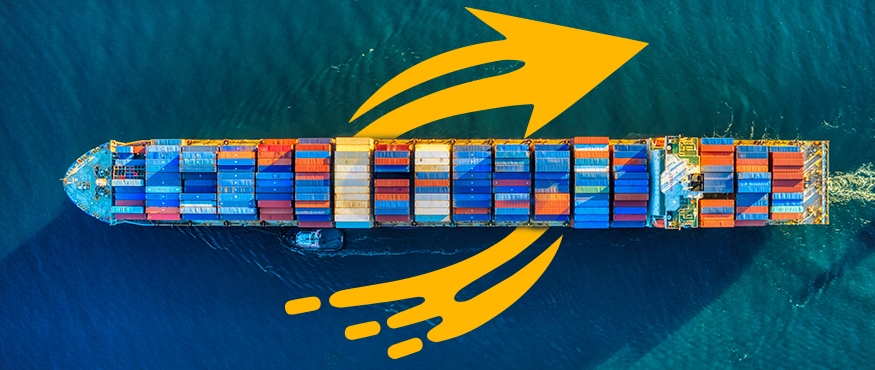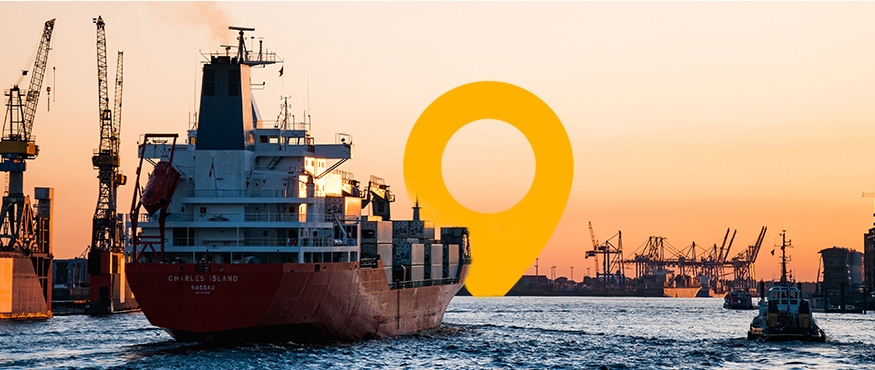MenuMenu
- Compare. Save. Ship.
- Main Menu
- How It Works?
- Shipping Services
- eCommerce
- Learn

Logistics can make or break an e-commerce business. Choosing the right shipping method for each order you send can have a significant impact on your profitability. And there are probably dozens of shipping methods you can choose from, depending on the number of carriers operating in your area. So how can you determine which one is best for each parcel you send out?
In this article, we’re going to explain the different types of shipping methods available for e-commerce businesses, along with their advantages and disadvantages. Read on to find out more about the most popular 10 types of shipping methods in 2022.

Even though it may seem as simple as shipping a package from point A to point B, the logistic process of eCommerce businesses is much more complex.
This process takes into account all the steps involved in shipping an order, including warehousing, inventory management, handling, packaging, security, package insurance, package tracking, and more.
The logistic process for global e-commerce businesses involves transportation by air, ground, and sea, and, more often than not, a combination of two of these methods. And eCommerce shipping can be expensive. Logistics can represent up to 15% of the costs of an online store. As a result, finding the right shipping methods for your business can help you lower your logistics costs.
Let’s take a look at the most common eCommerce shipping methods available and examine their potential advantages.

Full truckload (FTL) shipping is one of the quickest ground transportation methods. FTL means using an entire vehicle to ship goods from one location to another, and it’s usually preferred by retail industry giants.
FTL is generally quick and cost-effective because a single truck transports the goods from point A to point B without additional stops and handling operations in carrier distribution hubs.
However, FTL is cost-effective only if you can use the entire loading capacity of a truck. If the packages you ship don’t fill up a truck, this transportation method can be more expensive than other ground transportation methods.

Less Than Truckload (LTL) shipping is the most common method of ground transportation, and it’s popular with e-commerce businesses.
LTL means sharing the storage space of a truck with other parties. It’s a cost-effective way of transportation because you only pay for the space your parcels take up in the truck.
However, LTL may be slower than other ground transportation methods because carriers generally ship the package to a regional/local distribution center, unload it, process it, and load it in a last-mile carrier truck that delivers it to the recipient’s address.
There may also be one or two additional similar steps If the distance between your company’s warehouse and the recipient is great.

Flatbed shipping is ideal for cargo that doesn’t require an enclosure or that cannot be loaded into a regular truck. It’s also the preferred method of transportation for goods that have to be loaded and unloaded with a crane or forklift.

Flat-rate shipping is the go-to option for most eCommerce businesses. All major carriers offer this kind of shipping service, where you pay fixed shipping fees for boxes of different capacities and sizes. If you can fit it in the box, you can send it to local and even international shipping destinations.
Flat-rate shipping is popular for online merchants that sell items of similar size and weight because it allows them to optimize their shipping costs. However, this shipping method can become more expensive and less efficient if your product line includes items of various sizes.

Truck trailers and shipping containers can also be shipped via rail. Rail transport is generally cheaper than ground and air transportation methods because it consumes significantly less fuel.
However, rail transport is not quick, especially in North America where the goods may have to travel long distances before reaching their destination.

Air and sea transportation are popular for most manufacturers, but only a few global e-commerce businesses rely on them directly, without collaborating with a logistics company with experience in the industry.
Shipping by air or sea can be expensive if you don’t know which international authorities to negotiate with, so contacting a reputable shipping company to handle the contracts on your behalf may lower your costs.
Air freight is faster but substantially more expensive than sea freight. On the other hand, a parcel you ship via sea container may spend up to several weeks in transit toward its destination, but it’s the cheapest way to ship internationally.

Intermodal shipping is ideal for companies that sell overseas. This shipping method combines two or more traditional shipping methods to deliver a parcel from your warehouse to the customer.
Intermodal shipping can combine ground, air, and sea freight to deliver your package. The most popular combinations are air-ground and sea-ground shipping.
For example, you may hand off your package to a carrier who loads it on a truck to transport it to the airport. The package then flies to the recipient’s country of destination, where it goes into another truck, is transported to a distribution center, and is then shipped to the customer’s location by last-mile shipping carriers.
Most of the consumer goods you sell online arrive at your warehouse via sea-ground intermodal shipping. The manufacturer loads them on a container ship, they are then unloaded in a port near your location, loaded on a truck, and transported to the warehouse by shipping providers.

If you’re selling liquid or gaseous goods, you may be able to save on freight shipping if you transport them via tanker. A tanker is a sea vessel that’s optimized to hold large quantities of liquids, such as oil, chemicals, molasses, vegetable oils, and even wine.
Even though only a handful of eCommerce businesses worldwide currently use tankers to ship their goods from one part of the world to another, they’re a reliable and cost-efficient way of transportation.

Local shipping is a great option for eCommerce companies that are unable to enter the international market or are not interested to do so. For this method to be effective, you should set up a delivery border, which may be a town, city, or region.
Consumers who live or work within that border can benefit from timely, often low-cost delivery, so they are more likely to spend more when shopping online.

If you don’t want to waste your time finding the best shipping options for your business, you can implement real-time shipping rates. Popular e-commerce platforms, such as Shopify or Magento enable you to integrate directly with shipping platforms like Ship Expert.
Ship Expert’s e-commerce integration generates live pricing directly from Canada’s top carriers, and it enables you to choose the delivery method that best suits your needs at a price range of your choice for both local and international shipping.

Modern consumers value timely deliveries. Speedy deliveries are so popular that 41% of them say that they would pay more to benefit from same-day delivery. Here are some fast delivery options you should consider for your online business.
Same day delivery is not only one of the most popular delivery options in North America, it’s also one of the most profitable shipping options for business owners because you can offer it as a paid option.
Another popular option, this method can also be helpful for business owners because you can offer it as a paid delivery option.
With overnight delivery, your customers receive their orders on the next business day after placing them.
Expedited shipping is a popular option for most e-commerce customers. This method is faster than standard shipping, but it may be costly for business owners because many consumers expect it to be free of charge for orders over a certain value, which means you may have to pay for it, lowering your profit margin.
However, offering expedited delivery may lower your cart abandonment rate, especially if you’re shipping internationally and your standard delivery time is over two weeks.

The recent activity in the eCommerce industry shows that consumers expect to receive their orders in a timely manner, no matter if they order locally or internationally. Offering more delivery options at checkout can help you lower your online shop’s cart abandonment rate and increase the number of returning customers.
Integrating Ship Expert with your eCommerce platform enables you to offer more delivery options to your customers and helps you save money with shipping discounts usually reserved for large organizations, no matter how many orders you ship per month.


Director, Ship Expert
Greg Woo is a seasoned expert in the logistics and distribution industry, with a career spanning over two decades. He has a comprehensive understanding of shipping and distribution needs, and has extensive experience integrating with e-commerce stores as well as customer specific WMS (warehouse management systems) and ERP’s (enterprise resource planning software). His tenure in the industry and established courier and LTL partnerships have allowed clients to benefit from reduced shipping expenses, as well as improved operations through software and specialized integrations.
Greg is currently the Director at Ship Expert Inc., a role he has held since February 2015. Prior to his role at Ship Expert, Greg held significant positions at Juxto, a telecommunications and managed internet service provider.